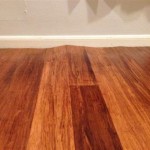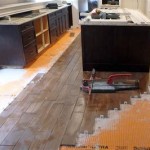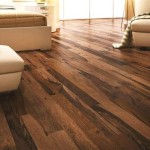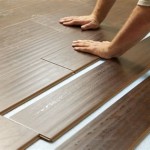Hallway Flooring Ideas: Transforming Transitional Spaces
Hallways are often overlooked areas in residential and commercial properties, relegated to functional transitional spaces. However, the flooring chosen for a hallway can significantly impact the overall aesthetic, functionality, and even the perceived value of a building. Selecting appropriate hallway flooring requires careful consideration of factors such as durability, traffic levels, ease of maintenance, and design compatibility with adjacent rooms. This article will explore various hallway flooring options, highlighting their advantages and disadvantages to aid in informed decision-making.
Durability and Traffic Resistance
Hallways, by their very nature, experience high foot traffic. This makes durability a paramount consideration when selecting flooring. Materials that can withstand constant wear and tear, resist scratches, and maintain their appearance over time are crucial. Several flooring options excel in this regard.
Hardwood Flooring: Solid hardwood offers inherent durability and a timeless aesthetic. It can endure significant traffic with proper maintenance, and minor scratches can often be sanded and refinished, extending its lifespan considerably. Engineered hardwood, consisting of a hardwood veneer over multiple layers of plywood, offers enhanced stability, particularly in areas with fluctuating humidity levels. However, hardwood can be susceptible to damage from moisture and excessive scratching from pets or furniture.
Tile Flooring: Porcelain and ceramic tiles are exceptionally durable and resistant to scratches, stains, and water damage. They are ideal for high-traffic hallways and areas prone to spills or moisture. Tile flooring is available in a wide range of styles, colors, and sizes, allowing for diverse design possibilities. The hardness of tile can make it feel cold underfoot, which can be mitigated with the use of area rugs or underfloor heating.
Luxury Vinyl Flooring (LVT/LVP): Luxury vinyl tiles and planks are designed to mimic the appearance of hardwood, tile, or stone while offering superior durability and water resistance. These products are typically constructed with multiple layers, including a durable wear layer that protects against scratches and dents. LVT/LVP is a cost-effective alternative to natural materials and is relatively easy to install, making it a popular choice for hallways.
Laminate Flooring: Laminate flooring is another synthetic option that offers good durability at a more affordable price point than hardwood or luxury vinyl. It consists of a composite wood core topped with a photographic layer that replicates the appearance of wood, stone, or tile. A durable wear layer protects the photographic layer from scratches and fading. While laminate is relatively water-resistant, it is not waterproof and should be avoided in areas prone to excessive moisture.
Aesthetic Considerations and Design Integration
The hallway flooring should complement the overall design aesthetic of the property and seamlessly integrate with adjacent rooms. The choice of flooring can significantly impact the perceived size, brightness, and style of the hallway.
Color and Pattern: Lighter flooring colors can create the illusion of a larger and brighter space, particularly in narrow or dimly lit hallways. Conversely, darker colors can add warmth and sophistication, but may make the hallway feel smaller. Consider the color palette of adjacent rooms when selecting flooring to ensure a cohesive flow. Patterns, such as herringbone or chevron, can add visual interest and character to a hallway, but should be chosen carefully to avoid overwhelming the space.
Material Consistency: Maintaining consistent flooring materials throughout connected areas can create a sense of continuity and flow. For example, extending hardwood flooring from a living room into the hallway can visually expand the space and create a unified design aesthetic. However, transitioning to a different flooring material at doorways can also be effective, particularly when differentiating functional areas. Carefully consider the transitions between different flooring materials to ensure a smooth and aesthetically pleasing change.
Style and Texture: The style of the hallway flooring should align with the overall architectural style of the property. For example, traditional homes may benefit from hardwood or tile flooring with classic patterns, while modern spaces may favor sleek and minimalist designs with smooth surfaces. The texture of the flooring can also impact the overall feel of the hallway. Textured surfaces can add visual interest and slip resistance, while smooth surfaces offer a clean and contemporary look.
Matching Wood Tones: If opting for hardwood or wood-look flooring (like LVT or laminate), matching wood tones with existing furniture, trim, or other wood elements within the adjacent rooms is crucial. Clashing wood tones can create a jarring and disjointed appearance. Pay attention to the undertones of the wood (e.g., warm, cool, or neutral) and select flooring that complements the existing wood elements. Taking samples of existing wood finishes when shopping for flooring can be helpful in ensuring a harmonious match.
Maintenance and Ease of Cleaning
Hallways, due to their high traffic volume, tend to accumulate dirt, dust, and debris quickly. Therefore, selecting flooring that is easy to clean and maintain is essential for preserving its appearance and longevity. Different flooring materials require different cleaning methods and levels of maintenance.
Hardwood Flooring Maintenance: Hardwood flooring requires regular sweeping or vacuuming to remove loose dirt and debris. Occasional mopping with a wood-specific cleaner is necessary to remove stains and spills. Avoid excessive moisture when cleaning hardwood, as it can damage the wood fibers. Refinishing may be required every few years to restore the finish and remove scratches. Protective mats or rugs at entrances can help minimize dirt and scratches.
Tile Flooring Maintenance: Tile flooring is relatively easy to clean and maintain. Regular sweeping or vacuuming followed by mopping with a mild detergent is typically sufficient. Grout lines can be prone to staining and may require occasional scrubbing with a grout cleaner. Sealing the grout can help prevent staining and make cleaning easier. Tile is very resistant to water damage and therefore is easy to clean in case of large spills.
Luxury Vinyl Flooring Maintenance: Luxury vinyl flooring is known for its ease of maintenance. Regular sweeping or vacuuming is sufficient to remove loose dirt and debris. Mopping with a mild detergent is typically all that is needed to clean spills and stains. LVT/LVP is water-resistant and easy to clean, making it a practical choice for high-traffic hallways.
Laminate Flooring Maintenance: Laminate flooring requires similar maintenance to luxury vinyl flooring. Regular sweeping or vacuuming is recommended to remove dirt and debris. Mopping with a laminate-specific cleaner is necessary for removing stains and spills. Avoid excessive moisture when cleaning laminate flooring, as it can cause swelling and damage. Use protective mats or rugs at entrances to minimize dirt and scratches.
Cost Considerations and Budgeting
The cost of hallway flooring can vary significantly depending on the material chosen, the size of the hallway, and the complexity of the installation. It is crucial to establish a budget and consider all associated costs before making a decision. Costs to consider include the price of the flooring material itself, underlayment (if required), installation labor, and any necessary tools or equipment.
Material Costs: Hardwood flooring typically falls in the higher price range, followed by tile and luxury vinyl flooring. Laminate flooring is generally the most affordable option. Consider the long-term value and durability of the material when evaluating cost. While a less expensive option may seem appealing initially, it may require more frequent replacement or repairs, ultimately costing more in the long run.
Installation Costs: Installation costs can vary depending on the complexity of the installation and the skill level of the installer. Professional installation typically ensures a high-quality result, but may be more expensive than DIY installation. However, DIY installation may require specialized tools and knowledge, and improper installation can void warranties or lead to future problems. Consider obtaining quotes from multiple installers to compare costs and services.
Underlayment Costs: Some flooring materials, such as laminate and luxury vinyl, require underlayment to provide cushioning, sound insulation, and moisture barrier protection. The cost of underlayment can vary depending on the type and thickness. Factor the cost of underlayment into the overall budget.
Additional Costs: Other costs to consider include the cost of removing existing flooring, preparing the subfloor, and disposing of waste materials. These costs can add up and should be factored into the overall budget. Always get a detailed quote from your contractor that includes these additional costs, so there are no surprises.
Safety and Accessibility Considerations
Safety and accessibility are important considerations for hallway flooring, particularly in homes with young children, elderly individuals, or people with disabilities. Slip resistance, impact absorption, and ease of navigation are crucial factors to consider.
Slip Resistance: Choose flooring materials with adequate slip resistance to prevent falls. Textured surfaces, such as textured tile or luxury vinyl with embossed textures, offer better slip resistance than smooth surfaces. Consider adding area rugs with non-slip backing in high-traffic areas to provide additional traction. Ensure the flooring meets safety standards for slip resistance, especially in commercial settings.
Impact Absorption: Flooring with good impact absorption can help reduce the risk of injuries from falls. Cork flooring, rubber flooring, and some types of luxury vinyl flooring offer good impact absorption. These materials can be particularly beneficial in homes with young children or elderly individuals.
Accessibility: Ensure that the hallway flooring is level and free of obstacles to facilitate easy navigation for individuals with mobility impairments. Avoid using thick or uneven rugs that can create tripping hazards. Consider the use of ramps or transition strips to smoothly connect different flooring levels. Proper lighting is also crucial for enhancing visibility and preventing falls.
Maintaining Consistent Heights: When transitioning between different flooring types, minimizing height differences is crucial for preventing tripping hazards. Use transition strips to create a smooth and gradual transition between different flooring levels. This is especially important for individuals using wheelchairs or walkers.

Hallway Flooring Ideas Carpet Floor Inspiration For Your

Transform Your Hallway Flooring From Dull To Dazzling With These 6 Ideas Carpetright

22 Hallway Flooring Ideas

22 Hallway Flooring Ideas

22 Hallway Flooring Ideas

Transform Your Hallway Flooring From Dull To Dazzling With These 6 Ideas Carpetright

Hallway Flooring Ideas Entrance Hall Floors

Hallway Flooring Ideas National Design Academy

Striking Hallway Flooring Ideas Zazous Vinyl

Hallway Flooring Ideas National Design Academy
Related Posts








